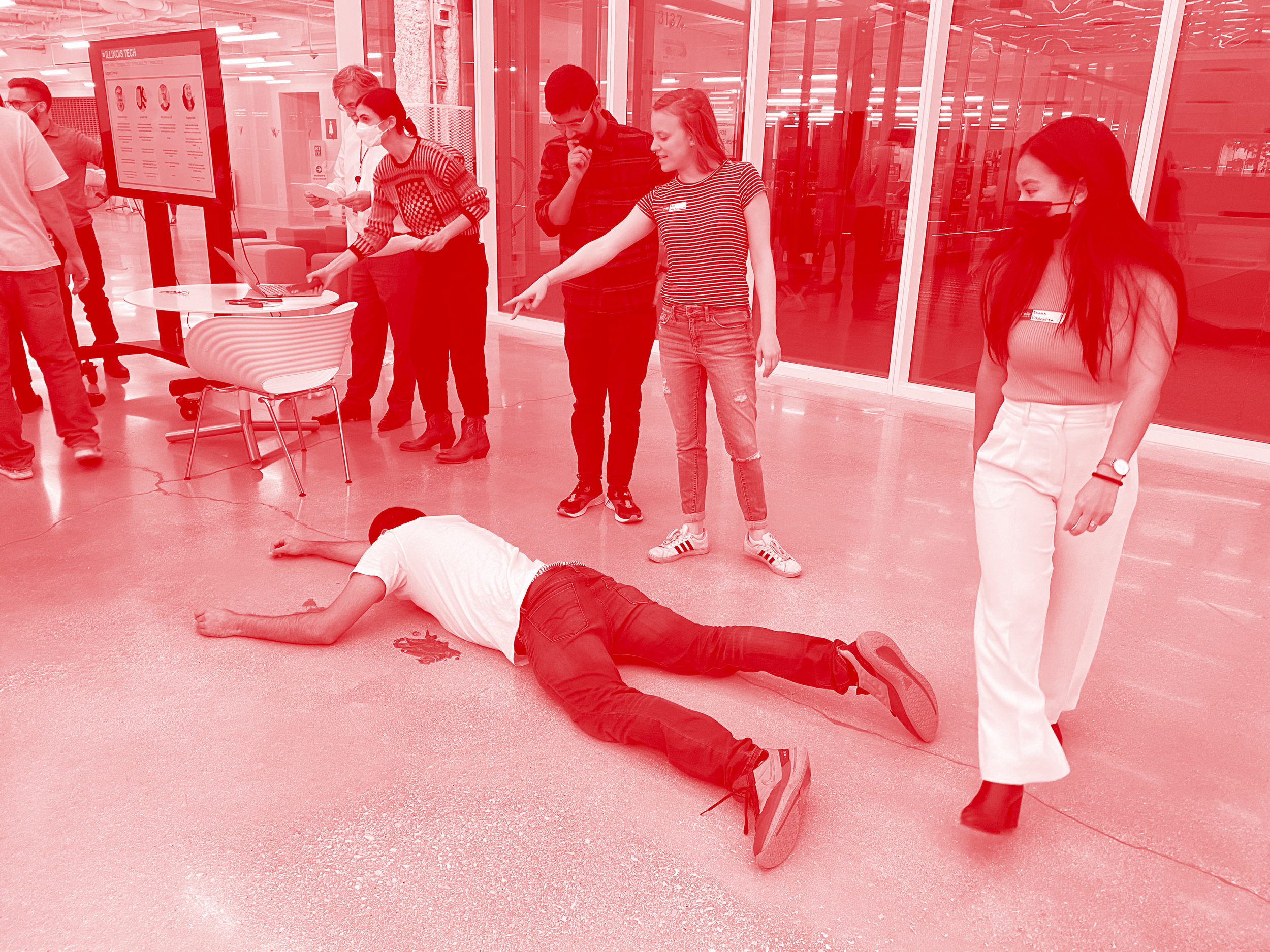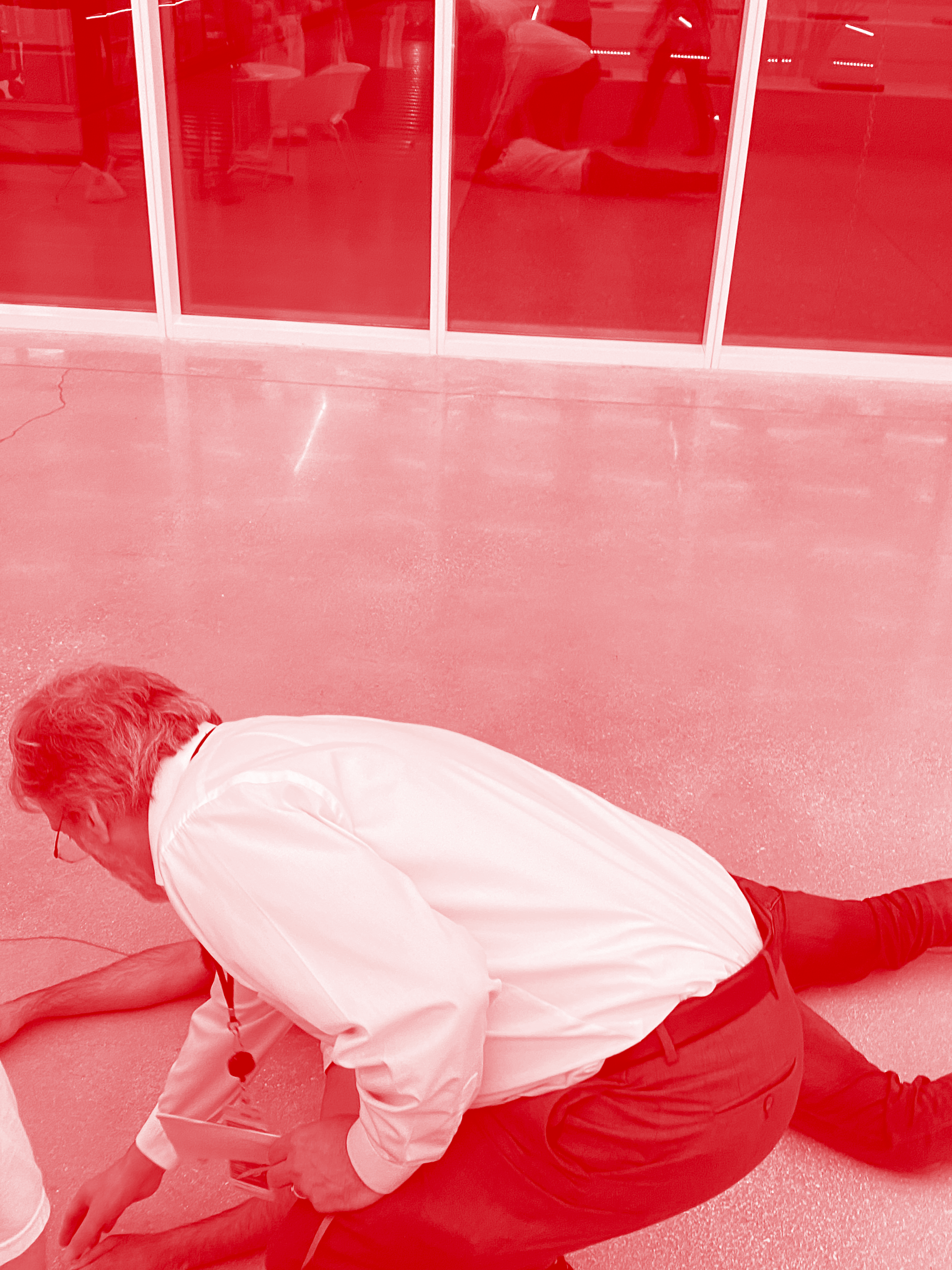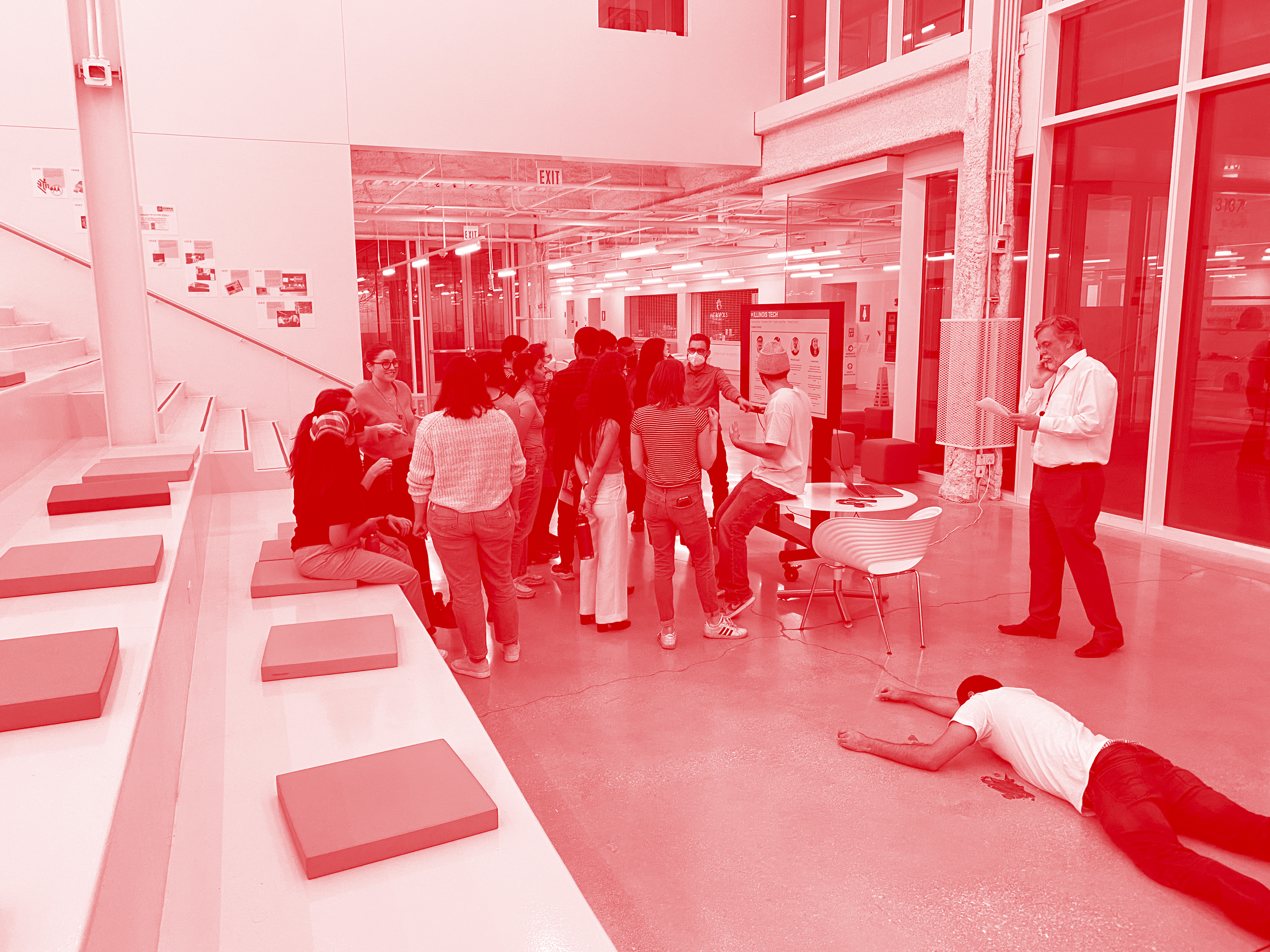
Access Illinois Tech will Access You
2022 | Designing Futures | MDes Project
Instructor: Laura Forlano | Team: Mitchell Kunichoff, Rohan Sampat, Joanna Veleris, myself
IIT Institute of Design
Our project explores self-tracking about lived experience, in digital forensics, and in surveillance and sousveillance. Within these domains we create a visceral and participatory experience of a self-tracking future that implores designers to consider the benefits and consequences of data collecting technologies and the systems that support them. By blurring the lines between playful and serious, digital and physical, truth and lies, mine and theirs, our team seeks to expose how self-tracking impacts human vulnerability.
What do you track?
As people move through the world, information is shed in the form of data. Data is captured through several mediums such as productivity in workplace tools, physiological health in medical tests, and identity and genealogy in DNA testing. One elective type of data capture is self-tracking, also called quantified self. Self-tracking devices are associated with fitness wearables, sleep and nutrition trackers, and are lauded as tools for empowering and self-reflexive understanding.
But self-tracking is also a form of data monitoring and surveillance, a contentious subject in the wake of the EU’s General Data Protection Regulation (GDPR), extensions of the US’s Children's Online Privacy Protection Act (COPPA), and the California Consumer Privacy Act (CCPA). It is within this friction that our team pursued a design futuring experiment to raise questions around the efficacy, interpretation, and ethics of self-tracking within individual lives as well as communities.
Prove it
As a prototype of our experience, we developed a card game called Prove It. In the game, one player turns a scenario card that indicates a culprit has committed an act against them (such as tracking footprints, stealing a power cable, etc.). The other three players are tasked with defending themselves with their own data (or alternatively, accusing others) in a storytelling fashion. The main player must determine who is most guilty given the evidence.
The data cards were divided between quantitative (i.e. hours in bed) and qualitative (i.e. appearing nervous or anxious to a witness).
When testing out our prototype, it was clear the players enjoyed accusing one another, they viewed the quantitative cards as being more trustworthy, and their existing familiarity with one another influenced their motivation to assume all are innocent while incorporating personality traits in their stories.
“The feeling of someone accusing you versus putting down a card [proving one’s innocence] feels very different. It’s interesting to play both data about the self and data about someone else, and combining them for a crazy story.” - Participant S
pLEASE AUTHENTICATE !
pLEASE AUTHENTICATE !
“Our team is ready to present, let me just pull up our presentation from Google Drive... oh, is this new?” - Roxanne
As all members of the IIT community have had to adjust to Access Illinois Tech, a new (100% real) Identity and Access Management (IAM) platform powered by Okta, it seemed fitting that our team build our experience on this existing infrastructural barrier.
Instead of the 2-step verification via SMS, we used Figma and some clever Photoshopping to modify the interface’s appearance and add a facial verification that remembers your eye and hair color.
A scream is heard
“Oh my gosh! What was that?! Ok class, that sounds like an emergency, everyone follow me. Let’s go see what happened.”
- Matt Mayfield, Associate Dean at IIT Institute of Design
We allude to an emergency taking place in the building. Rohan, our team member, recorded a scream that we played over a bluetooth speaker.
We were very lucky to have Matt Mayfield, ID Associate Dean, participate as an actor in our experience. We hoped his presence as an authority figure would change our peer’s perceptions of the activity.



Rohan’s body is discovered lying at the bottom of the pitch with presumably blood and bodily fluids nearby.
“As you all know, Illinois Tech rolled-out and implemented Access Justice as part of our commitment and dedication to maintaining a safe And fair environment for all students. Of course you all know this, to be a student at IIT you agreed to sharing your self tracked data in times of emergency, such as this…
ID Academy doubles as ID Justice, a team that represents ID at the IIT Justice and Jury Safety and Compliance Committee. Joanna is a graduate assistant on the team, so she will collect mandatory scans of your ID. This will collect and download your self tracked data. This is mandatory. Anyone who doesn’t comply will need an investigation.” - Matt
Joanna begins to collect scans of everyone’s student ID’s using the speculative scanner we created. Card scanning (via RFID or NFC) is not necessarily new, but the content being exchanged is still unclear to most people.
EMERGENCY TRIAL ~
EMERGENCY TRIAL ~
Matt finds another student’s ID card in Rohan’s hand… Suspicious?
“We don’t want this to get out, ID has a reputation to uphold, so no one is going home until we get to the bottom of this.
Now let me just log into Access Justice. Emergency Trial, yes that’s it.
Alright, your data is now being updated. Shortly here, the built-in AI will go through the data to pull out suspects based on data that the program found suspicious based on interactions with Rohan earlier and near the time of his scream. I want to reiterate - we are going to find out who did this, and you will be held accountable for this.” - Matt
Our team made a Figma prototype spoofing the internal IIT portal which includes an Access Justice tab, directing to an emergency trial dashboard.
“Oh it seems to think these are the suspects … Can each of you stand up?” - Matt
“Everyone else… As part of the new judicial system, each suspect needs mutually exclusive investigation. So 3-4 people, group around a suspect and deliberate based on the data at hand about the case, holding the interests of your suspect at large. Talk for 5 minutes and we will reconvene in a bit. Please all of you, be prepared to speak on behalf of your team your takeaways on the suspect based on their data.”
— Joanna, “ID Justice” Graduate Assistant



“I thought it was really interesting because I've been on a few juries... and once a defendant refused to testify... the lawyer said you cannot assume that this person is not guilty. In that situation, it was hard, if he was innocent why wasn't he defending himself? It was another example of that”
Participant E
“It made me reflect a lot on how am I making my judgements, how much of my emotions are playing into this.”
Participant A
“I thought the presentation was very engaging and challenged us to weigh the value of different types of data. I honestly felt a lot of pressure being a jury member, because I didn't want to accuse someone of a crime based off of a small subset of data.”
Participant D
All groups suggested their suspect was innocent, pointing to the incriminating data as a means of exonerating their suspect. However, there was a twist.
Only those wearing smart watches, reporting a calm pulse, could have their testimony heard. All others were deemed unfit.
Read our participant reactions to this experience below:








